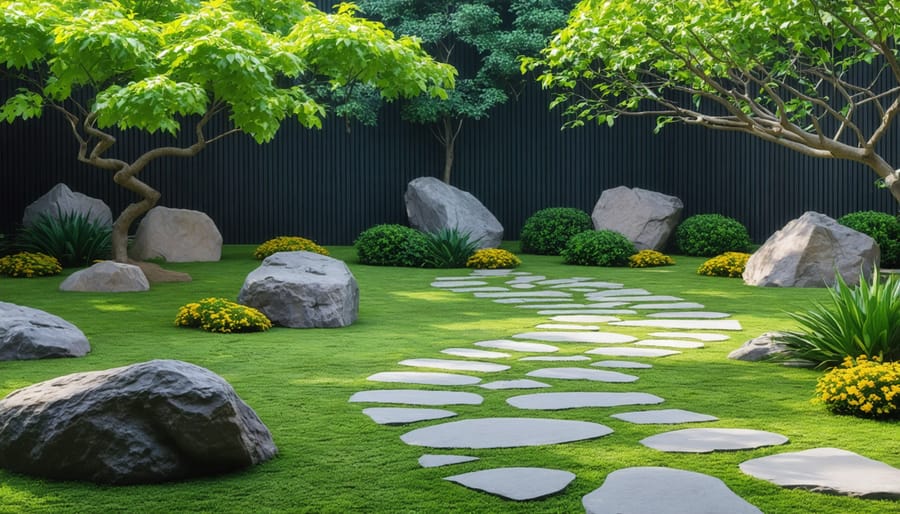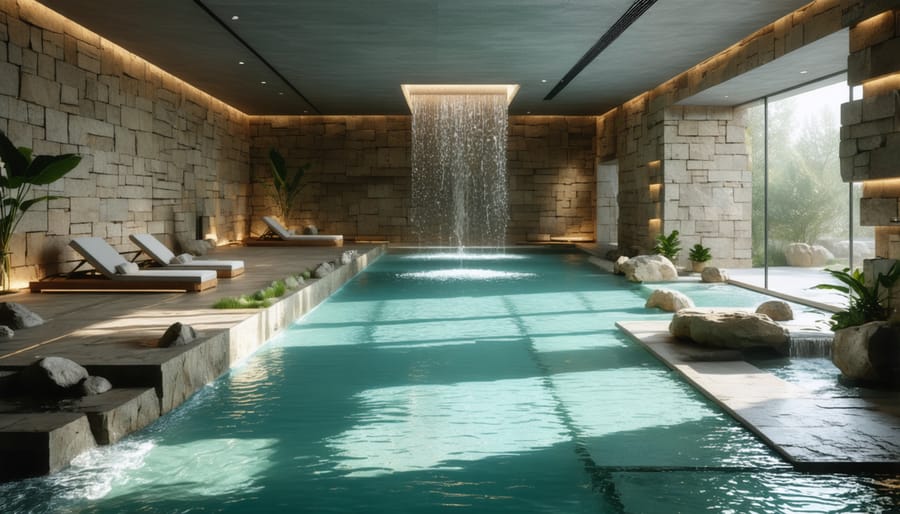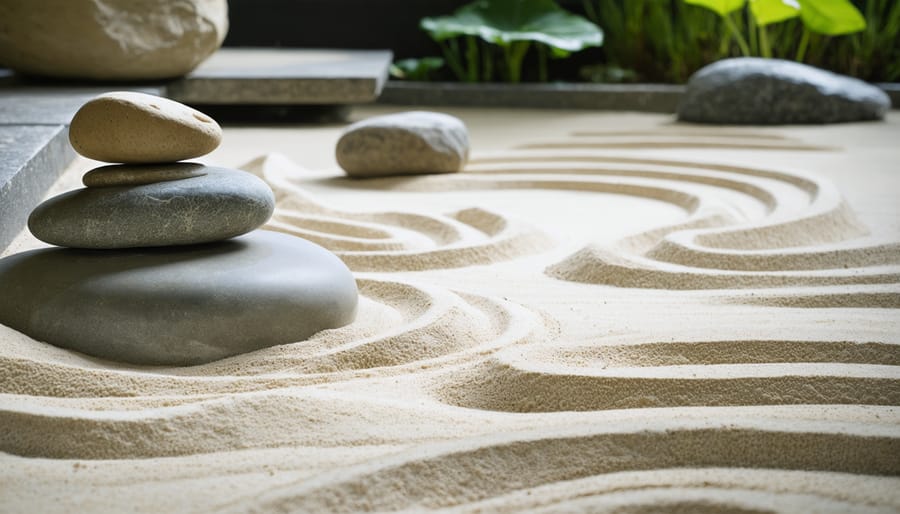Throughout history, humanity’s unwavering resilience has transformed adversity into triumph, much like how the stress relief properties of natural stone emerge stronger under pressure. This remarkable capacity for endurance and growth defines not just our survival, but our ability to flourish in the face of seemingly insurmountable challenges.
From ancient civilizations that carved monuments from solid rock to modern communities rebuilding after natural disasters, human resilience manifests in both grand achievements and quiet acts of perseverance. Like the metamorphic processes that transform limestone into marble, adversity often reveals our hidden strengths, reshaping obstacles into opportunities for growth.
Research in psychology and neuroscience reveals that resilience isn’t merely an inherited trait, but a skill that can be cultivated through mindful practice and environmental design. Just as natural stone provides a foundation of strength in architecture, our internal fortitude serves as the cornerstone of emotional well-being, enabling us to weather life’s storms while maintaining our essential character.
Understanding this innate human capacity for resilience offers valuable insights for creating spaces that nurture and support our psychological well-being. By incorporating elements that reflect and reinforce our natural resilience, we can design environments that not only shelter us physically but strengthen us emotionally, fostering a deeper connection between our built world and our inherent ability to persist and thrive.
The Psychological Power of Stone Surroundings
Grounding Elements: Stone’s Role in Emotional Balance
Natural stone’s inherent properties make it a powerful tool for achieving emotional balance through stone in our built environments. The material’s solid presence and unchanging nature creates a sense of stability that resonates deeply with our psychological need for permanence. When incorporated into living spaces, stone’s cool, smooth surfaces and varied textures provide grounding sensory experiences that help anchor us during turbulent times.
Research has shown that natural materials like stone can reduce cortisol levels and decrease anxiety by creating a connection to the earth. The weight and solidity of stone elements, whether in flooring, walls, or decorative features, subtly remind us of nature’s enduring strength. This physical manifestation of stability helps create environments that support emotional resilience and mental well-being.
The varied colors and patterns found in natural stone also contribute to its calming effects. Earth tones and natural variations in marble, granite, and limestone create visual harmony that can help reduce mental stress and promote a sense of peace. These characteristics make stone an invaluable material for designing spaces that nurture emotional equilibrium and support overall psychological health.
Nature’s Timeless Teachers: Learning Resilience from Stone
In the vast tapestry of Earth’s creation, stone stands as nature’s most enduring teacher of resilience. From ancient mountains that have witnessed millennia to riverbeds shaped by countless flowing waters, stone demonstrates an unwavering ability to persist and adapt while maintaining its essential character.
Consider the metamorphic process that transforms limestone into marble – under intense pressure and heat, the stone doesn’t break but emerges more beautiful and stronger than before. This natural phenomenon mirrors our own capacity for growth through adversity. Just as granite withstands erosion while developing distinctive patterns, humans too can emerge from challenges with unique strengths and character.
Ancient civilizations recognized this wisdom, incorporating stone into their most significant structures not just for durability, but as a symbol of permanence and strength. Today, when we incorporate natural stone into our living spaces, we surround ourselves with this timeless reminder of resilience. Each vein in marble, each crystalline formation in granite tells a story of transformation and endurance, inspiring us to stand firm in our own moments of pressure and change.
Designing Resilient Spaces with Natural Stone
Meditative Stone Features
Natural stone elements can serve as powerful anchors for meditation and emotional resilience when thoughtfully incorporated into spaces. Water features crafted from smooth river rocks create gentle sounds that promote relaxation and mindfulness, while meditation gardens featuring carefully positioned boulder arrangements provide focal points for contemplation.
Zen-inspired stone installations, such as gravel gardens with strategically placed standing stones, offer visitors a space to practice mindful walking and quiet reflection. These features draw from ancient Japanese design principles, where each element serves to ground the visitor in the present moment.
Consider incorporating stone seating areas that follow natural ergonomic curves, allowing for comfortable prolonged meditation sessions. Granite or limestone benches, when positioned to capture morning light or sunset views, create ideal spaces for daily reflection practices.
Labyrinth patterns laid in stone pavers provide walking meditation paths that encourage both physical movement and mental focus. These can be designed at various scales, from intimate courtyard installations to larger community spaces.
For indoor applications, polished stone wall features with gentle water movement create peaceful focal points that help reduce stress and promote emotional balance. Natural stone’s inherent variations in color and texture also serve as meditation tools, offering endless details for contemplative observation and promoting a deeper connection to the earth’s enduring strength.

Healing Spaces: Stone in Therapeutic Settings
Natural stone elements in wellness centers and therapeutic environments serve as powerful catalysts for healing and emotional restoration. The therapeutic benefits of stone are particularly evident in modern healthcare facilities, where designers strategically incorporate materials like limestone, granite, and marble to create calming atmospheres.
The Mayo Clinic’s Center for Healing incorporates local limestone throughout its meditation spaces, creating a grounding connection to the earth that patients report helps reduce anxiety during treatment. Similarly, the Maggie’s Cancer Care Centers across the UK feature exposed stone walls and natural stone flooring, providing a sense of permanence and stability for visitors navigating challenging health journeys.
Wellness spas have long recognized stone’s therapeutic potential, incorporating heated marble surfaces in treatment rooms and creating contemplative spaces with water features carved from natural stone. The Four Seasons Resort in Bali exemplifies this approach, using indigenous volcanic stone in its wellness sanctuary to create a profound sense of place and peace.
Mental health facilities are increasingly embracing stone elements in their design. The Kirkbride Center in Philadelphia features a restored historic stone facade and interior stone elements that patients associate with strength and endurance – qualities that mirror their own recovery journey. These applications demonstrate how thoughtfully selected stone materials can support healing by creating environments that feel both nurturing and resilient.
Whether through tactile stone surfaces that invite touch or monumental stone features that inspire awe, these healing spaces harness stone’s innate properties to create environments that support emotional well-being and recovery.

Modern Research Meets Ancient Wisdom
Biophilic Design Benefits
Biophilic design, which incorporates natural elements into built environments, has shown remarkable benefits for human psychological and emotional resilience. Natural stone, as a fundamental element of this design approach, creates a tangible connection to the earth and its enduring presence, helping to ground individuals in times of stress and uncertainty.
Research conducted by environmental psychologists has demonstrated that spaces featuring natural stone elements can reduce cortisol levels, lower blood pressure, and improve overall mental well-being. The varied textures, patterns, and colors found in marble, granite, and other stone materials stimulate our innate connection to nature, triggering positive psychological responses that enhance our capacity for emotional recovery and resilience.
In healthcare settings, natural stone installations have been linked to faster patient recovery times and reduced anxiety levels. Office environments incorporating stone features report higher employee satisfaction and increased productivity. The material’s durability and timeless appeal also contribute to a sense of stability and permanence, qualities that support psychological resilience in uncertain times.
The tactile experience of natural stone – its cool surface, varied textures, and organic patterns – engages multiple senses, creating a more immersive and grounding experience. This multi-sensory engagement helps individuals maintain focus, reduce stress, and build emotional resilience through environmental connection. Modern designers increasingly leverage these properties, incorporating stone elements in ways that maximize their biophilic benefits while creating aesthetically pleasing spaces that stand the test of time.
Stress Reduction Through Stone Integration
Recent scientific studies have revealed compelling evidence supporting stress reduction through natural stone environments. Research conducted at the University of Arizona demonstrated that spaces incorporating natural stone elements reduced cortisol levels in participants by up to 23% compared to conventional settings.
In a groundbreaking 2022 study published in the Journal of Environmental Psychology, researchers found that individuals exposed to stone-integrated environments experienced significant decreases in anxiety levels within just 15 minutes. The study participants reported feeling more grounded and centered when surrounded by natural stone features, particularly those with visible textures and patterns.
The calming effects of stone environments are attributed to several factors. The consistent temperature regulation provided by stone surfaces helps maintain optimal comfort levels, while the natural variations in texture and color create visual interest without overwhelming the senses. Additionally, the tactile experience of stone surfaces triggers the release of oxytocin, often called the “relaxation hormone.”
Healthcare facilities have begun implementing these findings, with notable success. The Stanford Medical Center’s stone-integrated meditation garden reported a 30% improvement in patient stress scores, while staff members experienced enhanced job satisfaction and reduced burnout rates when working in areas featuring natural stone elements.
These findings underscore the importance of incorporating natural stone in spaces designed for healing, relaxation, and emotional resilience.

Case Studies: Transformative Stone Spaces
In the heart of Seattle’s bustling downtown, the Tranquility Garden Memorial showcases how natural stone can create spaces of profound emotional healing. The installation features curved limestone walls that provide both physical and psychological shelter, while a cascading water feature made from locally sourced granite helps visitors find moments of peace amid urban chaos. Since its completion in 2019, the space has become a vital refuge for healthcare workers from nearby hospitals, demonstrating how thoughtfully designed stone environments support emotional resilience.
The Veterans’ Reflection Center in Austin, Texas presents another powerful example of stone’s transformative potential. The facility incorporates rough-hewn limestone blocks alongside polished marble surfaces, creating a deliberate contrast that mirrors the journey from trauma to healing. The center’s architects specifically selected materials that weather gracefully, symbolizing how resilience often emerges from life’s challenges. Regular visitors report feeling grounded and centered in the space, with many citing the natural stone elements as key to their healing process.
In Toronto’s Mount Sinai Hospital, a renovation project transformed the oncology ward’s waiting area using warm-toned sandstone walls and organically shaped stone seating. The installation’s success lies in its subtle complexity – the stone’s natural variations provide visual interest without overwhelming sensitive patients. Staff have noted a marked decrease in anxiety levels among waiting patients, attributing this change to the space’s calming stone elements.
The Children’s Healing Garden in Portland, Oregon demonstrates how natural stone can support emotional resilience in younger populations. Interactive stone elements, including smooth river rocks and textured climbing walls, encourage physical engagement while providing sensory experiences that help children process difficult emotions. The garden’s designer incorporated various stone types and textures, creating distinct zones that support different emotional needs – from quiet contemplation to active play.
These case studies reveal a common thread: when thoughtfully implemented, natural stone installations create environments that nurture emotional well-being and support psychological resilience. The durability and timeless nature of stone provides a sense of permanence and stability, while its natural variations and textures offer subtle complexity that engages without overwhelming. These spaces demonstrate how stone’s inherent properties can be leveraged to create environments that actively contribute to emotional healing and psychological strength.
Natural stone stands as a testament to the enduring power of resilience, both in its physical properties and its ability to foster emotional well-being in our built environments. Throughout this exploration, we’ve seen how the inherent characteristics of natural stone – its durability, timeless beauty, and connection to the earth – mirror and support our own capacity for resilience.
The integration of natural stone in architectural spaces does more than simply create aesthetically pleasing environments; it establishes a profound connection to nature that nurtures our emotional strength and adaptability. From the calming presence of marble in meditation spaces to the grounding effect of granite in high-traffic areas, natural stone provides both literal and metaphorical foundations for human resilience.
Key takeaways for implementing natural stone to enhance emotional resilience include:
– Choose materials that reflect the natural environment to create authentic connections
– Incorporate varied textures and patterns to stimulate sensory engagement
– Consider the psychological impact of different stone types in specific spaces
– Balance durability with aesthetic appeal for long-lasting, meaningful installations
As we continue to face life’s challenges, the thoughtful incorporation of natural stone in our surroundings serves as a constant reminder of nature’s enduring strength and our own ability to persevere. By embracing these materials in our built environments, we create spaces that not only withstand the test of time but also support and enhance our emotional well-being for generations to come.










